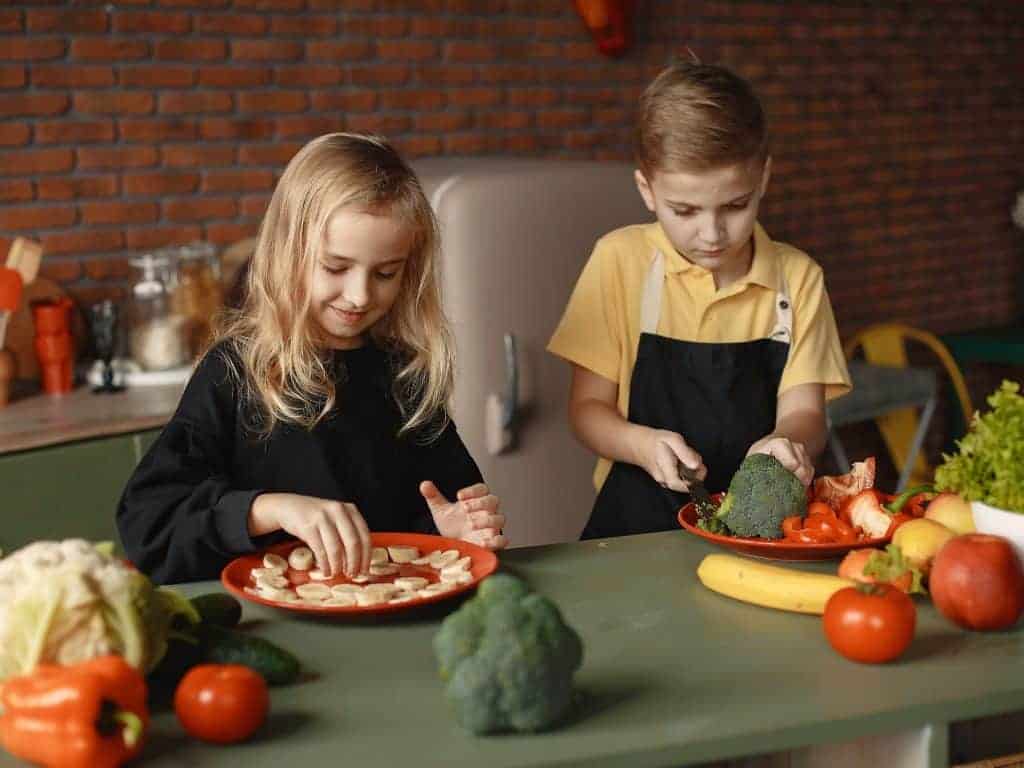Loading up a plate with colourful fruits and vegetables is a healthy way to eat, for adults as well as for kids.
Children aren’t always the most willing veggie eaters, but there are ways to encourage them to get enough of the good stuff.
What is 5-A-Day?
“5-A-Day” is a plan to encourage people to eat five to nine servings of fruits and vegetables every day, especially those that boast deep rich colours.
These colourful foods are loaded with the vitamins, minerals, fibber, and phytochemicals that your body needs to maintain good health.
While all fruits and vegetables are healthy choices, those with the deepest hues tend to pack the biggest punch.
Making a 5-A-Day Chart
Children often need a tangible way to track their progress, so making a 5-A-Day chart is a good way to help them to make sure that they are eating a nice variety of healthy fruits and vegetables every day.
Additionally, if parents attach rewards to proper eating, such as a fun outing after each week that the child meets their fruit and vegetable goals, kids are even more likely to cooperate.
Making the chart need not be complicated. Simply make a grid with seven rows and five columns, being sure that the spaces are nice and large. To the left of each of the seven rows, list a day of the week and place one of the following categories above each row:
- Purple / Blue
- Green
- White
- Yellow / Orange
- Red
Teach your children to place a mark or a sticker in the box that describes the colour of the fruit or vegetable that they have eaten each day and encourage them to eat at least one food in each colour category every day.
By week’s end, you will have a nice overview of your child’s progress to eat well. It helps to post the chart in the kitchen as a reminder for your child when they are choosing a snack.
They can take a quick look to see which colour fruit or vegetable they still need and then choose accordingly.
Examples by Colour
- Purple/Blue: blackberries, blueberries, plums, purple grapes, purple asparagus, aubergine, purple endive, purple peppers
- Green: avocados, green apples, green grapes, honeydew, kiwi, limes, pears, artichokes, broccoli, Brussels sprouts, green beans, cabbage, celery, cucumbers, leafy greens, leeks, okra, peas, green peppers, sugar snap peas, spinach, courgette
- White: bananas, cauliflower, Jerusalem artichoke, jicama, kohlrabi, mushrooms, onions, white potatoes, turnips
- Yellow/Orange: yellow apples, apricots, cantaloupe, grapefruit, lemons, mangoes, nectarines, oranges, papaya, peaches, persimmons, pineapples, tangerines, butternut squash, carrots, yellow peppers, pumpkins, rutabagas, sweet corn, sweet potatoes, yellow winter squash
- Red: red apples, cherries, cranberries, red grapes, pink grapefruit, pomegranates, raspberries, strawberries, watermelon, beetroot, red peppers, radishes, radicchio, red onions, rhubarb, tomatoes
Helpful Hints
In order to get your kids to eat enough fruits and vegetables, you must be sure that you have a well stocked kitchen, with healthy selections readily available.
Additionally, be sure to have the veggies cleaned, sliced, and ready to eat. If it is inconvenient for your kids to grab a healthy snack, they aren’t very likely to have one.
Oh, and one more thing — be sure that your kids see you eating your five a day, too!


